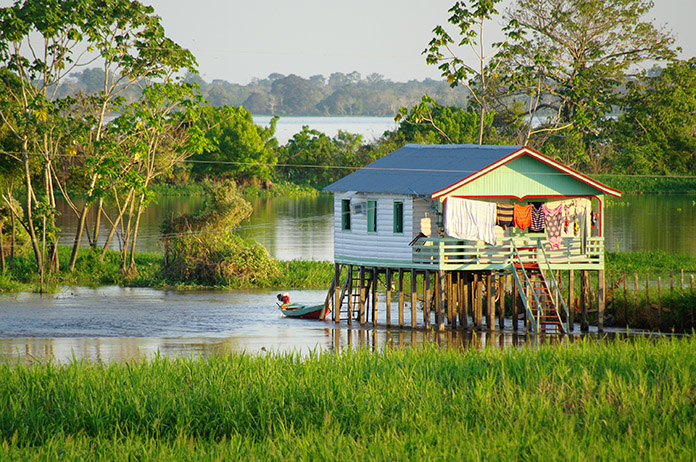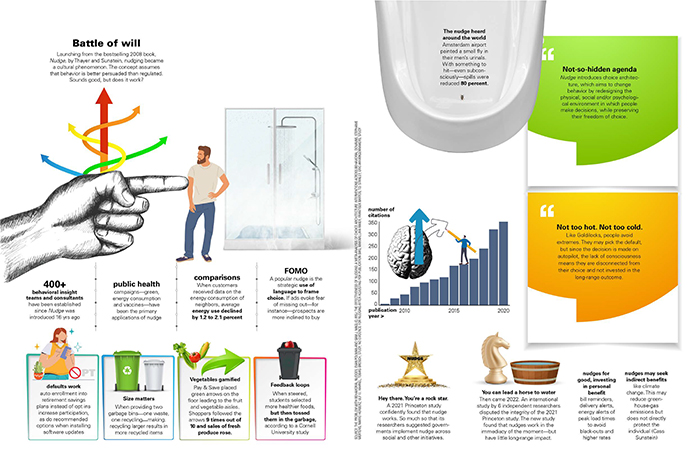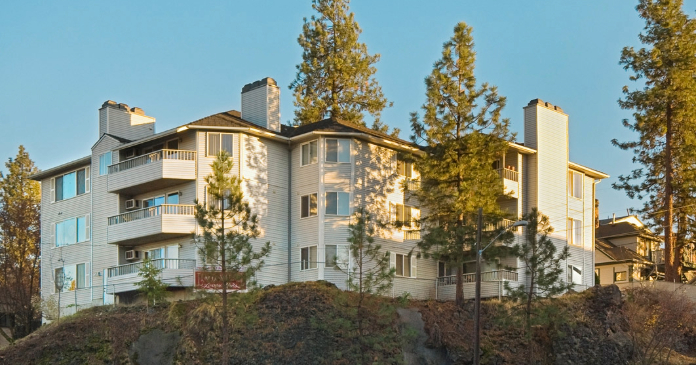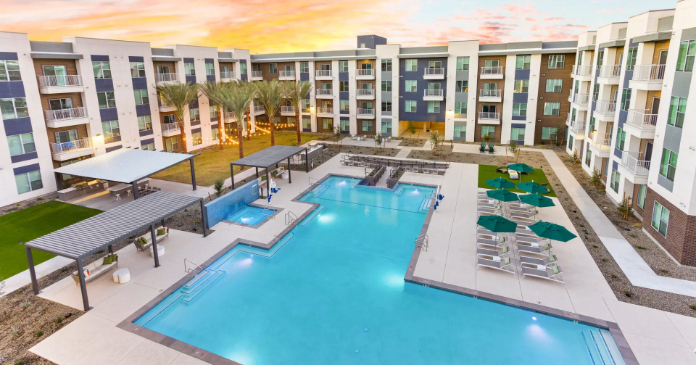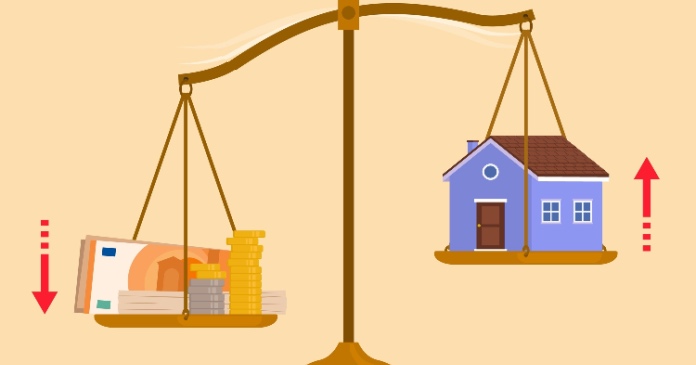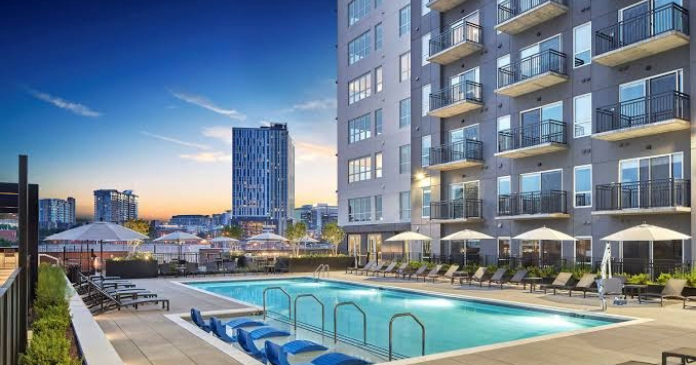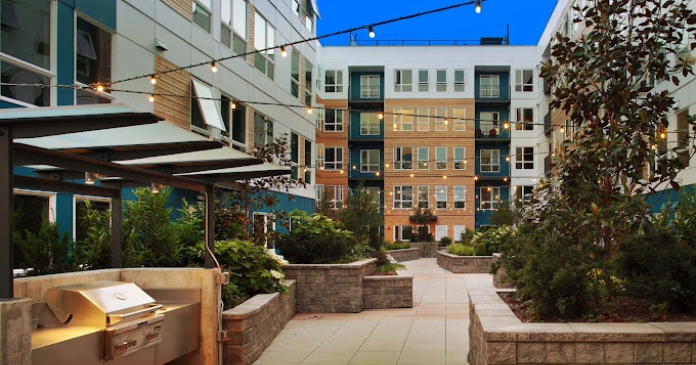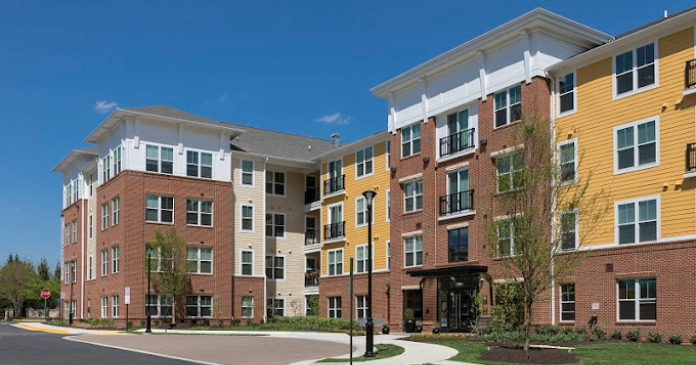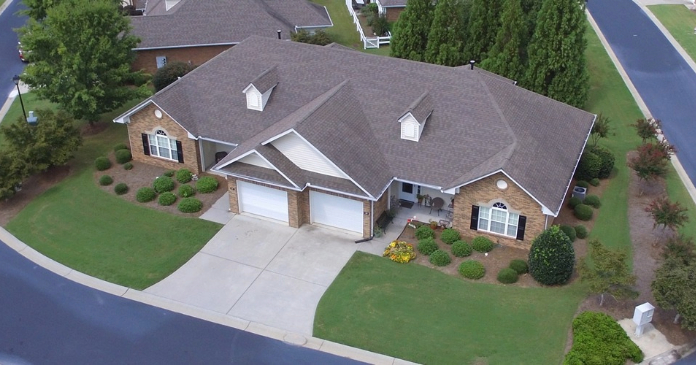The Jan. 29 approval by the American National Standards Institute (ANSI) of the National Green Building Standard (NGBS), a joint project of the International Code Council (ICC) and the National Association of Home Builders (NAHB), represents the culmination of many years of effort, not just by the consensus committee that spent a year creating the document, but also by those pioneers who built green before they knew what to call it.
“The standard’s a great leap forward as NAHB continues to bring green building into the mainstream,” NAHB Group Executive VP for Advocacy Bill Killmer said during a teleconference about the recent approval of the standard.
For decades, builders of both single-family and multifamily housing have been moving toward the more open floor plans, efficient kitchens and versatile family spaces that are so popular in today’s newer residential construction. Development of ever more efficient building envelopes and better insulation methods to lower utility bills and creation of walk-able communities and innovative methods to deal with and reuse storm water and conserve natural resources have long been the focus of environmentally responsible residential developers.
“The housing industry was creating a quiet revolution in the way that homes were designed and built. We didn’t call it a revolution, of course. Builders just referred to it as responding to the market,” Killmer said, reviewing the association’s involvement in the effort to certify green professionals and provide training and resources for its membership.
“The time has come for the National Green Building Standard. This standard is the first-ever ANSI-approved rating system for green homes, green remodels and green development,” he said of the green rating system that addresses both the single-family and multifamily sectors of the residential industry for which it was created.
The process of achieving ANSI approval may have been time consuming, but fulfilling the institute’s requirement that a fully inclusive and representative consensus committee develop the NGBS in its final form adds enormous credibility to the resulting document. That committee spent more than a year deliberating the content of the standard, held four public hearings and evaluated thousands of public comments submitted for consideration.
That broad cross-section of stake holders brought a variety of views to the table, said Dominic Sims, COO of the ICC that is dedicated to building safety and fire prevention and develops codes used to construct residential and commercial buildings, as well as homes and schools. And, most U.S. cities, counties and states that adopt codes choose the international codes developed by the ICC.
Although the consensus process is time consuming, “it produces a better result because it assures, throughout the accreditation process, that it is open, that it is transparent and that there’s due process to the various interest groups,” Sims said during NAHB’s teleconference.
“I think the entire industry will be transformed by the practical application of this standard. ICC has been working diligently with the NAHB Research Center and our stake holders to achieve this milestone and we stand ready to support the National Green Building Standard through our training, certification and other support programs for our members,” he said.
The 42-member consensus committee included members of environmental activists groups like the U.S. Green Building Council and governmental agencies from the federal to the local level ranging from the U.S. Department of Energy and the Environmental Protection Agency to local building officials. Also included were actual green home builders, remodelers, designers, product manufacturers and representatives of groups like the National Multi Housing Council (NMHC).
The committee used the NAHB Model Green Home Building Guidelines, created in 2005 and focused on the single-family home builder, as the starting draft for crafting the new standard and added an emerald level for superior performance in environmentally responsible residential construction to the bronze, silver and gold levels of the green home building guidelines. The NMHC was instrumental in expansion of the standard to include apartments and the residential portions of mixed-use developments. The cost for multifamily green certification on any of the NGBS levels of performance is $200 per building and another $20 for each green unit for NAHB members and $500 per building plus $20 per unit for non-members.
During a presentation in mid-February about the benefit of the standard for the multifamily industry, Paula Cino, director of energy and environmental policy for the NMHC, explained that the guidelines the consensus committee used as a starting point contained nothing about multifamily green building, a situation that was addressed to the satisfaction of her organization, but will need a bit of tweaking in later versions.
She said the committee that vetted proposed changes to the working draft considered dividing the document into separate sections for multifamily and single-family, but realized that most available products and practices apply to both sectors and, in the final document, there are really only a couple of rather minute provisions that set out different requirements for multifamily construction.
And, there are several categories of the standard where multifamily is in a better position to garner points than single-family, she said of the only green standard created with input from the apartment industry, the first and only such standard that is consistent and compatible with the International Residential Code and the only green standard rating system that addresses all types of residential projects.
For example, the NGBS awards points for infill development and for grey-field or EPA-recognized brownfield lots, which is easy money for multifamily developers since the popular trend has great promise for the future, as such smart-growth initiatives become common practice nationwide.
Multifamily companies also can earn points for proximity to public transportation by building within a half-mile of a mass transit system, or within five miles of a mass transit station with provisions for parking, as well as for location within one-half mile of six or more community resources like swimming pools, basketball courts, parks, grocery stores, the post office, places of worship, banks, schools, doctor and dentist offices and laundromats.
The range of mass transportation-related rewards also includes points for the design of walkways, street crossings and entrances to promote pedestrian activity, where new buildings are connected to existing sidewalks and areas of development.
Cluster development – a natural for mixed-use projects – that enables and encourages flexibility of design and development of land to preserve the natural and scenic qualities of a site by utilizing alternative methods for the layout, configuration and design of lots, buildings and structures, roads, utility lines and other infrastructure, parks and landscaping is another area where the multifamily developer can shine.
“Credit for the residential portion of mixed-use developments and for high density is an obvious benefit for multifamily construction,” Cino said, adding that several chapters of the NGBS promote practices many savvy multifamily builders already are incorporating into their communities because of market demand, like energy efficient appliances, high efficiency plumbing fixtures and smart irrigation systems and renewable materials. The inclusion of some of the more esoteric bio-based building materials like bamboo, cotton, cork and straw, while still somewhat unusual, appears to be a growing trend that likely will earn multifamily builders even more green credits, as the use of those highly renewable materials increases.
And the list goes on with numerous highlights for the multifamily builder interested in going green the new standard way, including the chapter on resource efficiency that rewards small unit size, stacked stories, green roof installation and reuse of existing buildings. The energy and water efficiency chapters list points for electric sub- metering and short plumbing runs.
The big difference, Cino believes, between the NGBS and LEED, which has been the gold standard for green building since its introduction in 2000 by the U.S. Green Building Council, is that LEED allows builders to load up in one area – energy efficiency, for example – and ignore other categories in the program. Not so with the NGBS, which requires at least minimal performance in all categories for overall certification as a green building or project.
Cino expects later versions of the NGBS will include the multifamily renovation section that currently is absent and amendments to the high- rise section that currently does not fully capture some multifamily high-rise methods and materials. Later versions also likely will include more credit for urban and urban-infill construction, urban heat island mitigation, light pollution reduction, on-site power generation, energy efficient elevators and more daylight design, which takes into consideration the sunlight’s effect when planning the building’s orientation on the site.
“We strongly believe that this standard is a better tool for green building in the sector than other green building programs currently available,” she said. “Our goal is to have the NGBS specified as a compliance option every time legislation or an incentive program says that residential construction has to follow some kind of green building criteria.”
Green building is certain to be among the criteria in the forefront of many of the Obama administration’s stimulus package programs that will emerge this year, harmonizing with the green programs most responsible developers within the multifamily sector already have initiated. In fact, results of the Third Annual Allen Matkins/ CTG/Green Building Insider’s green building survey that was completed last December and addressed current attitudes toward green building risks, costs, certification and trends, indicate that interest in building green has actually increased over the past year, despite the recent economic meltdown.
The survey company noted that the value of green construction increased to almost $50 billion in 2008 from $10 billion in 2005 and suggested that, by 2013, green construction could be valued at nearly $150 billion.
The vast majority of the more than 900 survey respondents favored green building and sustainable construction, but their perceived value of LEED certification diminished by around 10 percent from the previous year. “The results suggest that, while building industry respondents almost unanimously indicated that it is worth the time and effort to build green, LEED certification was perceived as attractive by just two-thirds of the green building supporters,” the researchers reported. They speculated that financial concerns might have colored some of the results, with respondents preferring to save their money for bricks and mortar, or that the results may reflect increased competition with other certification methods. In 2007, 77.4 percent of the survey respondents said they thought official LEED certification was worth obtaining. In 2008, that percentage dropped to 66.4 percent.
Mike Luzier, president of the NAHB Research Center that served as the administrator for the NGBS and also handles certification for NAHBGreen, which had until now had been using a four-year-old rating system applicable only to single family homes, expects the NGBS will become a very popular alternative for all residential green builders seeking verdant certification, attracted by its comprehensiveness and flexibility.
“It is comprehensive in terms of its application to the built environment,” Luzier said. In addition to its application to all residential construction and remodeling and rehab projects, the NGBS also includes a separate rating for subdivisions, thus addressing the green aspects of a project from the environmental development of raw land to the finished lot, which he and his colleagues believe is a first among green rating systems.
The NGBS also is comprehensive in terms of the environmental features and performance levels it demands. Energy efficiency and the efficient use of resources, along with the use of recycled materials and locally available and indigenous materials are rewarded, as are water efficiency and indoor environmental quality, he said.
“It’s a rigorous, yet flexible, standard,” said Luzier, agreeing with NMHC’s Cino that the mandatory requirement to achieve minimum levels of performance across all categories, preventing builders from bunching all their points in one area, is both unique and essential to a standard to which adherence will result in a truly green construction.
The option to choose among four performance thresholds – bronze, silver, gold and emerald – adds flexibility to the green rating system and the opportunity to earn discretionary points in most of the categories provides the very dark green builder the opportunity to truly shine. “That’s important because that’s another place where the market is going to differentiate where a builder or consumer seeks to get those points and we’ll see some regional variations there,” he predicted.
Another element that is particularly important to the Research Center is the very rigorous verification and certification program, developed in partnership with the ICC, for which the center will be the certification agency. “Every point claimed under this is going to be visually confirmed by one of my inspectors or it will not be granted and that’s important because we know as an industry that it is essential for us to be able to substantiate any green claim we make,” said Luzier.
Don Ferrier, a custom home-builder in Texas who was named Green Building Advocate of the Year at the 2007 NAHB National Green Building Conference and joined Luzier, Sims and Killmer in their discussion of the NGBS approval by ANSI, said the newly approved rating system not only sets a new benchmark for building green homes, but also serves as a great educational tool.
“If anybody wants to know more about what green building is, I don’t think there’s any better place to go than this study,” Ferrier said.
“It’s voluntary. It doesn’t put a lid on things. And it allows us to choose what’s best for us and best for our clients.”





